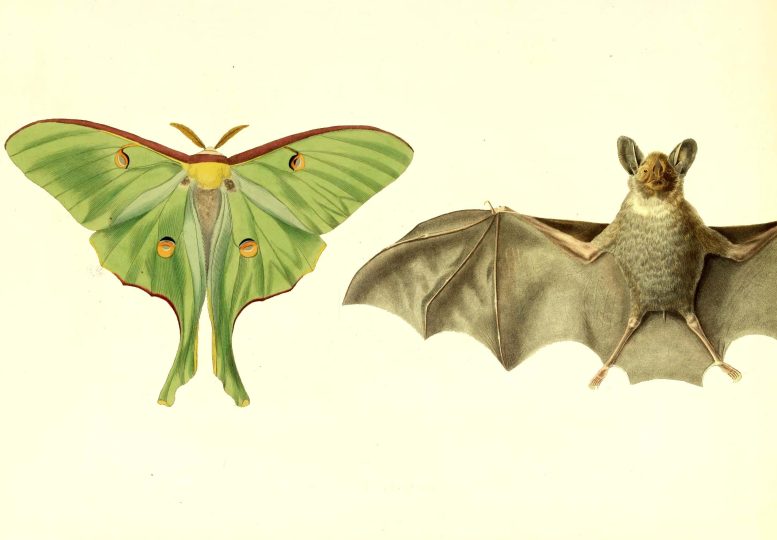
The long, trailing tails of Luna moths appear to have one, single function and few, if any, drawbacks. Credit: Bat illustration from “Voyage dans l’Amérique méridionale” (1846-1847) by Alcide d’Orbigny. Moth illustration from “Illustrations of Exotic Entomology,” (1837) by Dru Drury.
Researchers found that Luna moth tails primarily serve to misdirect bat attacks, with no additional mating advantages or increased visibility to bird predators.
In a pair of complementary studies, researchers took a close look at Luna moth (Actias luna) tails through the eyes of birds and female moths to test the tails’ role in predation and sexual selection. Scientists have known for about a decade that Luna moths — and other related silkmoths — use their long, trailing tails to misdirect bat attacks.
“They have projections off the back of the hindwing that end in twisted, cupped paddles,” said Juliette Rubin, a doctoral student at the Florida Museum of Natural History and lead author of both studies. “From experimental work with bats and moths in a flight room, we’ve found that these structures seem to reflect bat sonar in such a way that bats often aim their attacks at the tails instead of the main body.”
Traits that evolve for one specific function can often be co-opted by natural selection for another, and Rubin wondered whether the twisted tails of Luna moths might come with any additional benefits or hidden costs.
Male Luna moths doff their tails, retain their charm
Silkmoths have independently evolved tails on multiple occasions across three continents, and the appendages can vary significantly in length. Hind wings in some species can extend to more than twice the size of the moth’s wingspan, and the longer the tail, the more likely a moth will successfully thwart a prowling bat.
But far from being drab, utilitarian decoys meant only for sonar-sensing bats, silkmoth tails are often visually stunning, like decorative streamers trailing behind a kite. Across the animal and plant kingdoms, many of the most colorful and alluring structures are used to attract mates or pollinators, and scientists suspected the same might be true of silkmoth tails.
This type of dual function for a single trait isn’t without precedent. The vivid colors of strawberry poison dart frogs (Oophaga pumilio) both deter predators and help males attract mates; male deer and other ungulates use their antlers to fight off rivals and signal their vigor to females; and moths that use clicks or chirruping sounds to disrupt bat echolocation can compose duets using the same sounds during courtship.
Luna moths have neither mouths to produce sound nor ears to hear it, but they do have sensitive eyes and powerful scent-detecting antennae. When female Luna moths are ready to mate, they perch in one place and emit a pheromone, a single molecule of which is enough to trigger a male antenna. The males of closely related Indian moon moths (Actias selene) can find females from more than six miles away by following the pheromone plume to its source.
“We don’t know how many males are traveling to a female each night,” Rubin said. “It’s entirely possible she’s able to call in multiple suitors and potentially have her pick.”
Rubin put this idea to the test, setting up mating experiments in which a female Luna moth was enclosed in a flight box with two males: one with normal hind wings, and one with its tails removed.
Initially, the data seemed to suggest that females preferred males whose wings remained intact, but additional controlled experiments demonstrated that this was more likely an incidental effect of the tail removal. During trials in which both males had their wings clipped, and one had the tails glued back on, there was no difference in their mating success.
Do tails make Luna moths invisible to bats but conspicuous to birds?
Having demonstrated tail wings likely weren’t conferring any additional benefits beyond survival, Rubin wanted to see whether they had any obvious drawbacks. Their long tails effectively throw off pursuing bats by creating a decoy target, but bats aren’t the only adversaries Luna moths have to avoid. Their electric green tails with bright, pink parfait borders might make Luna moths noticeable to birds and other visually oriented predators that hunt during the day.
Other organisms contend with similar tradeoffs. The bioluminescent displays of fireflies make it easier for males to locate potential mates, but it also makes them stand out to nocturnal frogs and geckoes.
Luna moths live incredibly short lives, during which they can afford to lose a tail or two. Once they emerge from their cocoons, the moths have about a week to find a mate and reproduce before dying. “This creates a very intense period of adulthood, where surviving the night is of the utmost importance,” Rubin said.
Luna moths are mostly inactive during the day, reducing their chances of being nabbed midair. If they don’t do a good enough job concealing themselves, however, they run the risk of not surviving to nightfall.
Rubin wanted to know if their visually elaborate tails put Luna moths at a disadvantage in this high-stakes game of hide-and-seek. To find out, she and her colleagues wrapped mealworms in pastry dough in the shape and size of Luna moth bodies, to which they attached real wings, half of which had tails. They partially hid these moth replicas among branches and leaves in an aviary, then introduced a succession of Carolina wrens (Thryothorus ludovicianus), recording how many of the snacks the birds located and ate.
The results conclusively indicate that the tails had no effect on the birds’ ability to locate the fake moths. This might seem odd to us, Rubin said, because we’re such visually oriented animals. But there’s evidence that suggests birds might rely on search images when trying to distinguish food items from patterns in the background.
Humans do this too. When trying to complete a Where’s Waldo puzzle, people often look for the characteristic red, horizontal lines of Waldo’s shirt while scanning across the page. It’s possible that Luna moth tails don’t match the typical moth and butterfly mold that birds expect to see while foraging, the equivalent of Waldo wearing a solid red shirt rather than his signature stripes.
While not indicative of all silkmoths, the studies suggest that these stunning and complex structures evolved for a single function in Luna moths.
“When we see these really obvious physical features in animals, we’re often drawn into stories we’ve heard about them,” Rubin said. “One is that conspicuous traits are for attracting mates or competing with rivals, and another is that these very showy traits must come with a cost. Both of these studies show it’s really important to test those assumptions. A trait that’s obvious to us, as visual creatures, might not stand out to the predators that hunt them, and the traits that we think are dynamic and alluring might not seem that way to a potential mate.”
The studies were published in the journals Biology Letters and Behavioral Ecology.
References:
“Sexual selection does not drive hindwing tail elaboration in a moon moth, Actias luna” by Juliette J Rubin and Akito Y Kawahara, 6 April 2023, Behavioral Ecology.
DOI: 10.1093/beheco/arad019
“Testing bird-driven diurnal trade-offs of the moon moth’s anti-bat tail” by Juliette J. Rubin, Nich W. Martin, Kathryn E. Sieving and Akito Y. Kawahara, 1 February 202, Biology Letters.
DOI: 10.1098/rsbl.2022.0428
Akito Kawahara of the Florida Museum of Natural History, and Nich Martin and Kathryn Sieving of the University of Florida are also co-authors.

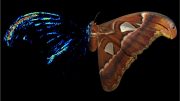
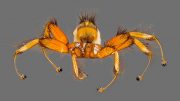

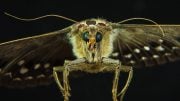
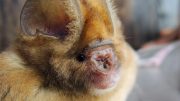
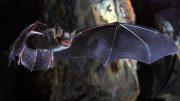
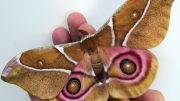
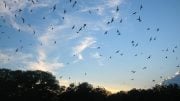
Be the first to comment on "Tails of Survival: The Luna Moth’s Secret Weapon Against Bats"